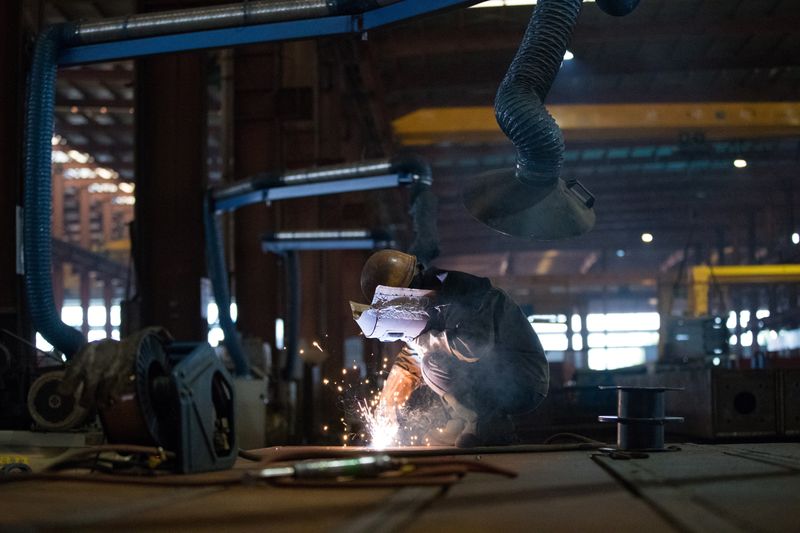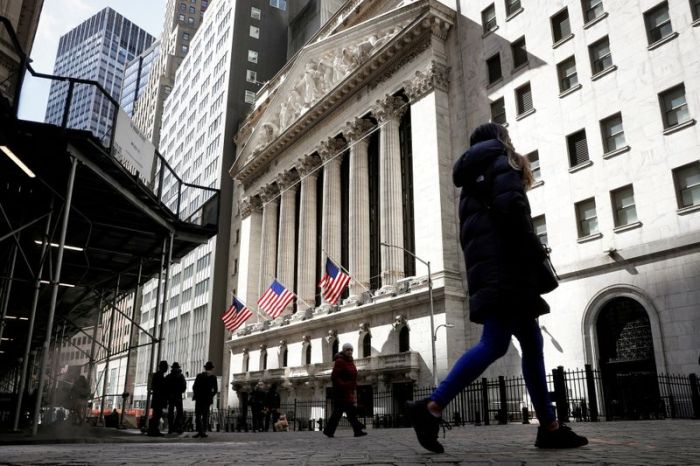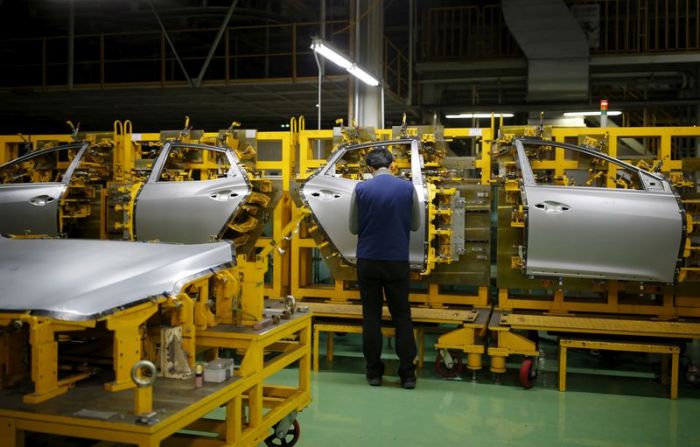LONDON/TOKYO (Reuters) – Global factory activity lost momentum in August as the ongoing coronavirus pandemic-disrupted supply chains, raising concerns faltering manufacturing would add to economic woes caused by slumping consumption, surveys showed on Wednesday.
Many firms reported logistical troubles, product shortages and a labour crunch which have made it a sellers’ market of the goods factories need, driving up prices.
While factory activity remained strong in the euro zone, IHS Markit’s final manufacturing Purchasing Managers’ Index (PMI) fell to 61.4 in August from July’s 62.8, below an initial 61.5 “flash” estimate.
“Despite the strong PMI figures, we think that lingering supply-side issues and related producer price pressures might take longer to resolve than previously expected, increasing the downside risk to our forecast,” said Mateusz Urban at Oxford Economics.
In Britain, where factories also faced disruptions, manufacturing output grew in August at the weakest rate for six months. The United States likely suffered a similar slowdown, data is expected to show later on Wednesday. [GB/PMIM]
Canada’s economy unexpectedly shrank last quarter and in July, official data showed on Tuesday – hurt by decreases in manufacturing, construction and retail trade – and Australia reported slower growth in the second quarter on Wednesday.
CHINA BRAKES
Meanwhile, Southeast Asia – a low-cost manufacturing hub for many global companies – was hit particularly hard with factory activity shrinking in Vietnam, Indonesia and Malaysia because of virus outbreaks and output suspensions.
And in a worrying sign for the global economy, China’s factory activity slipped into contraction in August for the first time in nearly 1-1/2 years as COVID-19 curbs, supply bottlenecks and high raw material prices weighed on output.
China’s Caixin/Markit Manufacturing PMI fell to 49.2 in August, from 50.3 in July, breaching the 50-mark separating growth from contraction.
The result was well below market expectations, underscoring the fragile nature of China’s recovery that had helped the global economy emerge from pandemic-induced doldrums.
The private survey followed an official PMI on Tuesday, which showed the index falling in August but staying above the 50 mark.
“The elephant in the room for the long North Asia, short ASEAN view is China. This morning, the Caixin Manufacturing PMI followed yesterday’s official number South, falling under 50,” said Jeffrey Halley at OANDA.
“That rounds out a grim week for China’s PMIs as COVID-19 lockdowns and the same supply chain challenges the rest of the world is experiencing erode economic performance.”
Export power-houses Japan, South Korea and Taiwan also saw manufacturing activity expand at a slower pace in August, a sign chip shortages and factory shutdowns in the region could delay a sustained recovery from the pandemic-induced slump.
The surveys highlight the pandemic’s broadening damage in Southeast Asia, where soaring infections and subsequent lockdown measures have hurt both the service and manufacturing sectors.
Delta variant outbreaks in the region have caused supply chain headaches for the world’s largest manufacturers, many of which rely on auto parts and semiconductors made in low-cost bases such as Thailand, Vietnam and Malaysia.
“If the strict lockdown measures continue, Southeast Asia may find it hard to remain a global production hub,” said Makoto Saito, an economist at NLI Research Institute.
Japan’s PMI eased and new export orders posted their first contraction since January. South Korea’s index fell to 51.2.
In Vietnam and Malaysia, activity was hurt by lockdown measures and rising infections that forced some factories to suspend operations. Vietnam saw factory activity shrink while Malaysia’s PMI stood at 43.4 in August.
Once seen as a driver of global growth, Asia’s emerging economies are lagging advanced economies in recovering from the pandemic’s pain as delays in vaccine rollouts and a spike in Delta variant cases hurt consumption and factory production.
Growth in India’s factory sector activity slowed as persistent pandemic-related weakness weighed on demand and output, forcing firms to cut jobs again following a brief recovery in July.
(Reporting by Jonathan Cable and Leika Kihara; Editing by Sam Holmes and Toby Chopra)

























